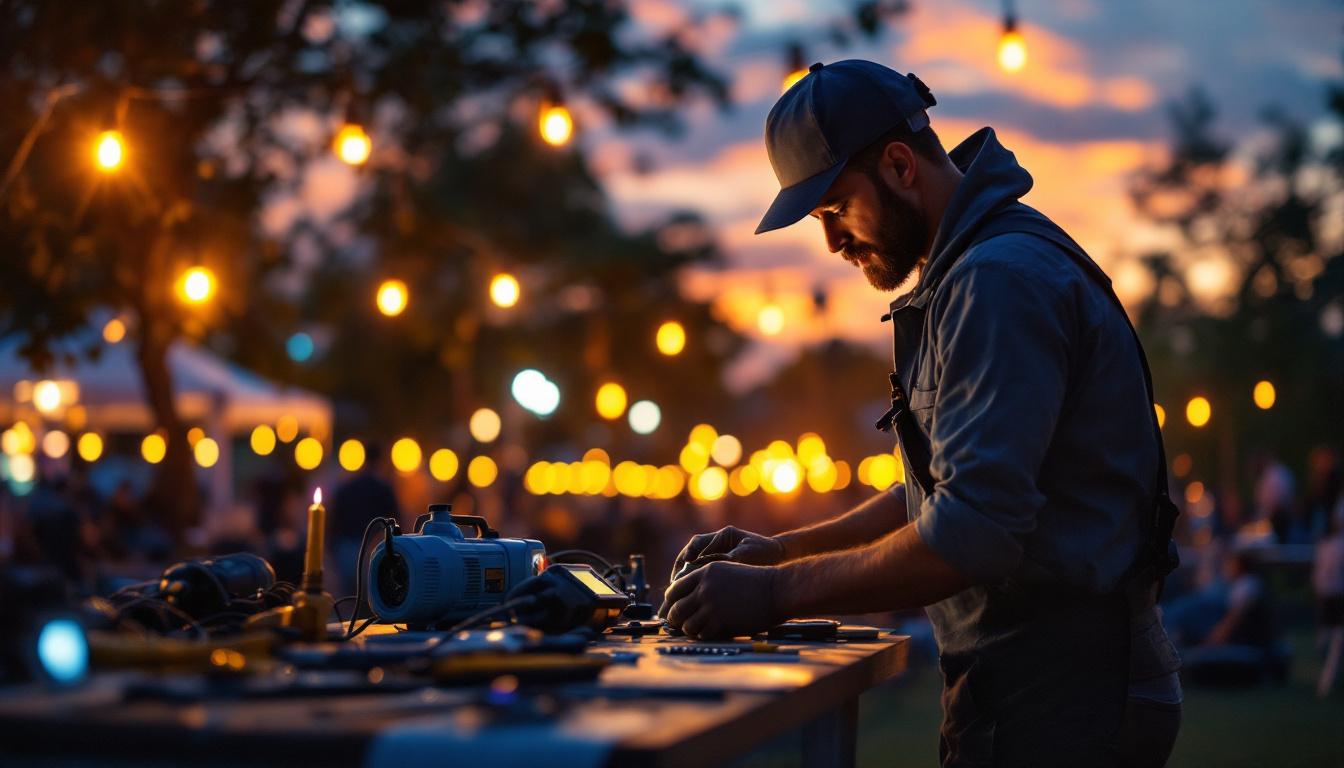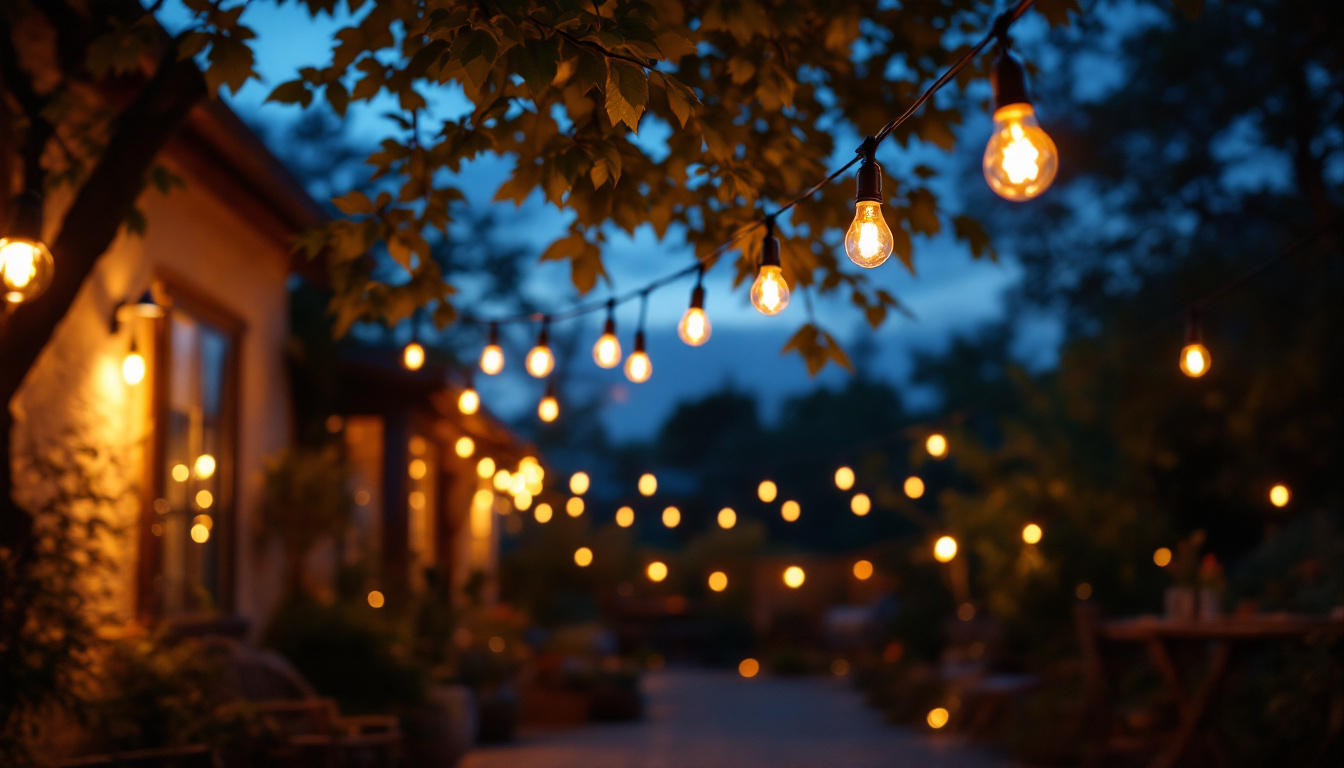
Lighting plays a crucial role in construction and event management, providing not only visibility but also enhancing safety and aesthetics. For lighting contractors, understanding the best practices for temporary lighting is essential to ensure efficient, safe, and effective installations. This article delves into the key considerations and practices that lighting contractors should adopt when working with temporary lighting solutions.
Temporary lighting refers to any lighting system that is installed for a limited duration, typically during construction projects, events, or emergency situations. Unlike permanent fixtures, these systems are designed for easy installation and removal, catering to the dynamic needs of various environments. This flexibility allows for quick adaptations to changing conditions, ensuring that safety and functionality are always prioritized.
Temporary lighting can serve multiple purposes, from illuminating work areas on construction sites to enhancing the ambiance of outdoor events. Understanding the specific requirements of each project is vital for selecting the appropriate lighting solutions. For instance, in a construction setting, adequate lighting is crucial not only for productivity but also for the safety of workers, as it minimizes the risk of accidents. In contrast, for an outdoor wedding or festival, the focus may be on creating a visually appealing atmosphere that complements the overall theme of the event.
There are several types of temporary lighting that contractors can utilize, each suited for different applications. Common options include:
Choosing the right type of temporary lighting depends on the specific needs of the project, including brightness requirements, duration of use, and environmental conditions. Additionally, considerations such as power sources—whether battery-operated, solar, or wired—can significantly influence the choice of lighting. For example, solar-powered lights may be ideal for outdoor events where access to electricity is limited, while wired options might be necessary for longer-term construction projects that require consistent and reliable lighting. Furthermore, understanding the local regulations regarding temporary lighting installations can help ensure compliance and enhance safety measures on site.
Effective planning is crucial for successful temporary lighting installations. Lighting contractors should consider various factors to ensure that the lighting system meets the needs of the project while adhering to safety standards.
Before installation, a thorough assessment of the site is necessary. This includes evaluating the layout, identifying potential hazards, and determining the areas that require illumination. Factors such as the height of structures, the presence of obstacles, and the intended use of the space should all be taken into account.
Additionally, understanding the power supply options available at the site is essential. Temporary lighting may require generators or access to existing electrical systems, so planning for these needs in advance can prevent delays during installation. It is also important to consider the environmental impact of the lighting setup; for example, using energy-efficient LED lights can significantly reduce power consumption and minimize the carbon footprint of the project.
Calculating the appropriate amount of light needed for a project is a critical step. This involves determining the lumen output required for the specific tasks being performed in the area. For instance, construction zones may require higher lumen levels for safety, while event spaces may focus more on aesthetics.
Using lighting design software can assist contractors in visualizing the layout and ensuring that the light distribution is even and effective. This not only enhances safety but also improves the overall experience for workers and attendees alike. Furthermore, considering the color temperature of the lights can influence the ambiance; warmer tones can create a welcoming atmosphere for events, while cooler tones may be more suitable for industrial applications. Understanding these nuances can help contractors tailor their lighting solutions to meet the specific needs of each project, ultimately leading to greater satisfaction and success.
Once the planning phase is complete, the next step is installation. Proper installation techniques are essential for ensuring safety and functionality.
Safety should always be the top priority when installing temporary lighting. Contractors must adhere to local regulations and standards, ensuring that all equipment is properly grounded and secured. Using weatherproof fixtures and cables is crucial for outdoor installations to prevent electrical hazards.
Additionally, it is important to mark any potential trip hazards and ensure that cables are routed safely to minimize the risk of accidents. Regular inspections during the installation process can help identify and address any safety concerns promptly. Furthermore, it is advisable to equip all personnel with appropriate personal protective equipment (PPE), such as hard hats, gloves, and non-slip footwear. This not only enhances individual safety but also fosters a culture of safety awareness among the entire crew.
The placement of temporary lights can significantly impact their effectiveness. Lights should be positioned to minimize shadows and provide even illumination across the work area. This is particularly important in construction zones where visibility is critical for safety.
For events, the strategic placement of lights can enhance the ambiance and highlight key features of the venue. Contractors should consider the flow of foot traffic and the specific areas that need to be illuminated, such as stages, walkways, and dining areas. Additionally, using a combination of lighting types, such as ambient, task, and accent lighting, can create a more dynamic and visually appealing environment. For instance, uplighting can be used to draw attention to architectural details, while downlighting can ensure that pathways are clearly visible and safe for attendees. Careful planning of light intensity and color temperature can also influence the mood of the event, making it essential to tailor the lighting design to the specific atmosphere desired by the client.
Temporary lighting systems require ongoing maintenance and monitoring to ensure they function effectively throughout the duration of the project. Regular checks can help identify any issues before they become significant problems. This proactive approach not only enhances safety but also contributes to the overall efficiency of the project, allowing for a smoother workflow and minimizing downtime.
Conducting routine inspections of the lighting system is essential. This includes checking for burnt-out bulbs, loose connections, and any signs of wear and tear on cables and fixtures. Addressing these issues promptly can prevent disruptions and maintain safety standards. Additionally, it is advisable to keep a log of these inspections, documenting any repairs or replacements made, as this can be valuable for future projects and audits.
In addition to visual inspections, contractors should also monitor the performance of the lighting system. If certain areas are not receiving adequate illumination, adjustments may be necessary to reposition lights or add additional fixtures. Utilizing light meters can provide precise measurements of illumination levels, ensuring compliance with safety regulations and enhancing the overall effectiveness of the lighting setup. Furthermore, integrating smart technology into the lighting system can allow for real-time monitoring and automated adjustments based on environmental conditions.
In construction and event settings, emergencies can arise unexpectedly. Having a plan in place for dealing with power outages or equipment failures is crucial. Contractors should ensure that backup lighting options are available and that all team members are aware of emergency protocols. Regular drills and training sessions can reinforce these protocols, ensuring that everyone knows their roles and responsibilities in the event of an emergency.
Incorporating battery-operated lights or generators can provide a reliable backup in case of an emergency, ensuring that the site remains illuminated and safe for workers and attendees. Additionally, it is wise to assess the layout of the site and identify critical areas that require constant lighting, such as exits and high-traffic zones. By strategically placing backup lighting in these areas, contractors can further enhance safety and reduce the risk of accidents during unforeseen circumstances. Moreover, establishing a communication plan for notifying team members about any changes in lighting status can help maintain order and safety on-site, ensuring that everyone is informed and prepared to act swiftly if needed.
As the focus on sustainability grows, lighting contractors should consider energy-efficient options for temporary lighting. Utilizing LED technology not only reduces energy consumption but also minimizes heat output, making it a safer choice for temporary installations.
When selecting temporary lighting, opting for energy-efficient fixtures can significantly reduce operational costs. LED lights, for instance, consume less power and have a longer lifespan compared to traditional incandescent or halogen bulbs.
Contractors should also consider using solar-powered lights for outdoor events or remote job sites. These options can provide illumination without relying on traditional power sources, further enhancing sustainability efforts.
Proper disposal of lighting fixtures and materials is an important aspect of sustainability. Contractors should be aware of local regulations regarding the disposal of electrical components and strive to recycle materials whenever possible.
Implementing a recycling program for used bulbs and fixtures not only reduces waste but also demonstrates a commitment to environmental responsibility. Educating team members about proper disposal methods can further enhance these efforts.
Temporary lighting is an essential component of many construction and event projects. By following best practices in planning, installation, maintenance, and sustainability, lighting contractors can ensure that their temporary lighting solutions are effective, safe, and environmentally friendly.
In an industry that is continuously evolving, staying informed about the latest technologies and practices is key to providing high-quality service. By prioritizing safety, efficiency, and sustainability, lighting contractors can enhance their reputation and deliver exceptional results for their clients.
Ready to elevate your temporary lighting solutions with the best products on the market? Look no further than LumenWholesale, where we provide contractors with the highest quality, spec-grade lighting at unbeatable wholesale prices. Say goodbye to local distributor markups and hello to a vast selection of reliable, high-performance lighting that meets the highest industry standards. Plus, with free shipping on bulk orders, you can secure premium lighting at the best value — all without hidden fees or compromises. Don’t miss out on the perfect combination of quality, affordability, and convenience. Wholesale Lighting at the Best Value is just a click away.
Discover how lighting contractors can effectively utilize light sensing sensors to prevent common installation issues and enhance project outcomes.

Discover top welding lamp strategies used by lighting contractors to enhance safety, efficiency, and precision. Boost your projects—learn expert tips today!.

Discover expert insights on choosing and installing outdoor LED string bulbs with ease.

Discover how wall power outlets are revolutionizing the lighting industry and becoming indispensable tools for contractors.